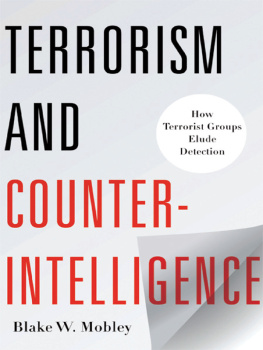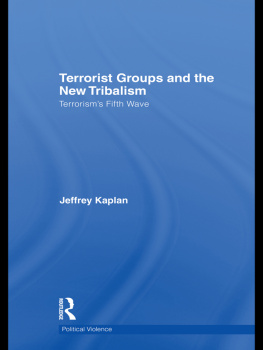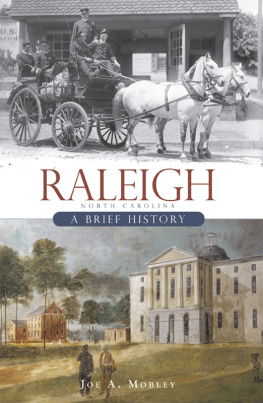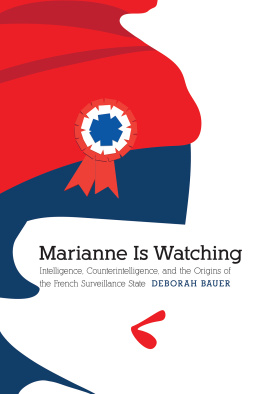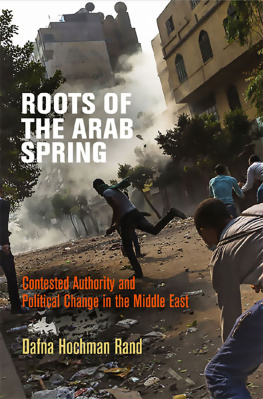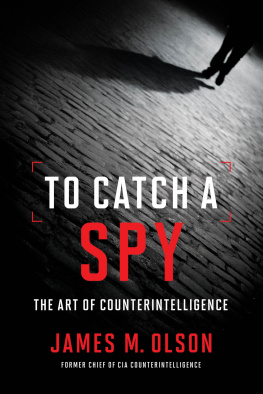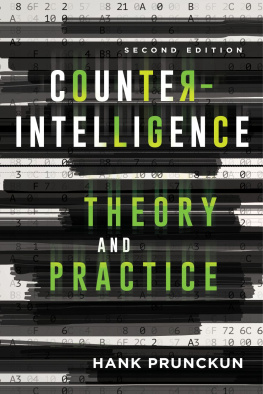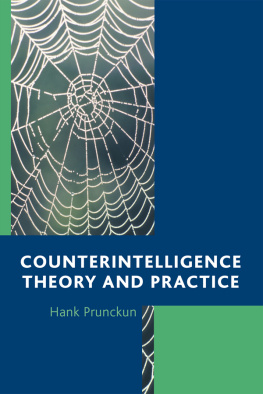TERRORISM AND COUNTERINTELLIGENCE
Columbia Studies in Terrorism and Irregular Warfare
Columbia Studies in Terrorism and Irregular Warfare
Bruce Hoffman, Series Editor
This series seeks to fill a conspicuous gap in the burgeoning literature on terrorism, guerrilla warfare, and insurgency. The series adheres to the highest standards of scholarship and discourse and publishes books that elucidate the strategy, operations, means, motivations, and effects posed by terrorist, guerrilla, and insurgent organizations and movements. It thereby provides a solid and increasingly expanding foundation of knowledge on these subjects for students, established scholars, and informed reading audiences alike.
Ami Pedahzur, The Israeli Secret Services and the Struggle Against Terrorism
Ami Pedahzur and Arie Perliger, Jewish Terrorism in Israel
Lorenzo Vidino, The New Muslim Brotherhood in the West
Erica Chenoweth and Maria J. Stephan, Why Civil Resistance Works: The Strategic Logic of Nonviolent Resistance
William C. Banks, New Battlefields/Old Laws: Critical Debates on Asymmetric Warfare
TERRORISM
AND
COUNTER-
INTELLIGENCE
HOW TERRORIST GROUPS ELUDE DETECTION
BLAKE W. MOBLEY
Columbia University Press New York
Columbia University Press
Publishers Since 1893
New York Chichester, West Sussex
cup.columbia.edu
Copyright 2012 Columbia University Press
All rights reserved
E-ISBN 978-0-231-52809-2
Library of Congress Cataloging-in-Publication Data
Mobley, Blake W.
Terrorism and counterintelligence : how terrorist groups elude detection / Blake W. Mobley.
p. cm.(Columbia studies in terrorism and irregular warfare)
Includes bibliographical references and index.
ISBN 978-0-231-15876-3 (cloth : alk. paper)
ISBN 978-0-231-52809-2 (e-book)
1. Terrorists. 2. Intelligence service. 3. Criminal methods. 4. TerrorismPrevention. I. Title.
HV6431.M625 2012
363.325163dc23
2011046373
A Columbia University Press E-book.
CUP would be pleased to hear about your reading experience with this e-book at .
Cover Designer: Thomas Stvan
References to Internet Web sites (URLs) were accurate at the time of writing. Neither the author nor Columbia University Press is responsible for URLs that may have expired or changed since the manuscript was prepared.
CONTENTS
I could not have written this book without the support and guidance of many friends, colleagues, and mentors. First and foremost, I owe an extraordinary debt of gratitude to Dan Byman, professor in the Security Studies Program at Georgetown University and chair of my dissertation committee. Dan has been a wonderful mentor and friend, and his ideas and suggestions helped to shape this book. Dans boundless energy, patience, and kindness have also provided intellectual and personal inspiration.
David Edelstein, associate professor in the School of Foreign Service at Georgetown University, and Andrew Bennett, professor of government at Georgetown University, provided invaluable substantive and methodological support. I am indebted to my good friend Larry Grossbackrenowned as one who can turn pulp into poetryfor his substantive comments and editing. I also thank the numerous fellow scholars who helped me to refine my questions and my analysis in seminars and workshops at Georgetown, where I presented my initial research. I am also grateful to a host of analysts and case officers I worked with at the Central Intelligence Agencyunnamed for obvious reasonswho contributed to my understanding of terrorism and counterintelligence over the years. To everyone mentioned here, I offer absolution for any errors and omissions in the text, which are my own.
I thank the two anonymous reviewers and the editorial board at Columbia University Press for their very helpful comments. I also thank Bruce Hoffman, editor of the Terrorism and Irregular Warfare series at Columbia University Press, for his guidance and assistance. Bruce is a luminary figure in this field, and it was a great honor to have his input and support.
My family and friends deserve a special thanks for suffering through my endless preoccupation with non-state-actor counterintelligence. My wife, Sarah, has been my greatest supporter and my best friend. I thank her for her patience and understanding while I spoiled countless nights and weekends in Cairo and Washington while completing this project. Finally, I dedicate this book to my son, FinnI hope that when he grows up and reads this one day, the threat of catastrophic terrorism will be a thing of the past.
The views expressed here are solely my own and do not reflect the views or opinions of RAND or its sponsors.
Jamal Ahmed al-Fadl joined al Qaida in 1989. As a founding member, he was a close confidant of Osama Bin Laden and helped the notorious leader to manage al Qaidas properties and front companies in Sudan. By the mid-1990s, al-Fadl was entrenched in the upper echelons of al Qaidas bureaucracy and by all appearances was ready to lay down his life for the organization. On September 7, 1996, al-Fadl approached the US embassy in Eritrea on foot, undoubtedly rehearsing in his mind a dark plot that had been planned for many months. The ensuing events caught everyone off guard. Al-Fadls secret plot did not involve attacking the embassyhis plan was to sell al Qaidas most treasured secrets to the US government. Above all, al-Fadls decision to betray al Qaida made it clear to all observers that the shadowy terrorist organization was not immune to spies.
Al Qaidas problems are not unique. In fact, most terrorist groups face even greater challenges, and many do not survive past their first few years of existence. All terrorist groupseven those that survive for decadesface an even more basic threat to their existence: the discovery of their activities, members, and plans by government law enforcement and intelligence agencies.
Groups that fail to hide their communications, movements, and plots from a determined adversary will be eliminated quickly. Terrorist groups that survive for years do so because they have developed sophisticated methods for staying hidden. These strategies are often referred to a counterintelligence. Current studies on terrorism have not systematically addressed this critical issue, and, more important, most terrorist groups that experience crippling counterintelligence problems do not survive long enough to be studied at all. What factors shape a terrorist groups counterintelligence capabilities? The answer to this question has profound implications for homeland security and international counterterrorism efforts.
This book is fundamentally about disrupting terrorist groups. It examines terrorist groups through the lens of counterintelligence and offers lessons for uncovering terrorist plots and manipulating terrorist-group decision making. The book makes a case for elevating the role of counterintelligence analysis in counterterrorism operations. The book specifically explores how we can better monitor, impede, and eliminate terrorist groups by exploiting the weaknesses of their counterintelligence and security practices. Part of the approach involves knowing where to look for their weaknesses. Some counterintelligence pathologies are more likely to accrue to certain types of terrorist groups, whereas some destructive bureaucratic tendencies, such as mistrust and paranoia, pervade all terrorist groups. Being smarter about where to look for weaknesses and how to capitalize on them will allow intelligence and law enforcement agencies to improve how they recruit and manage human penetrations (spies) into terrorist groups, locate and monitor the groups communications, and analyze and manipulate their decision making.

